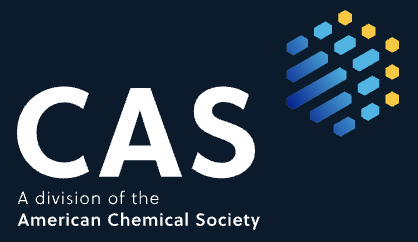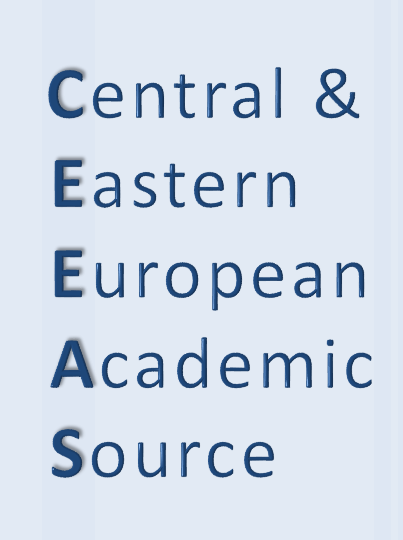Quick Search
Volume: 5 Issue: 1 - 2013
| REVIEW | |
| 1. | Parvovirus B19 infection during pregnancy: Clinical course and prognosis Mustafa Kara, Mehmet Balcı, Ömer Erkan Yapça, Neziha Yılmaz doi: 10.5222/JOPP.2013.001 Pages 1 - 6 Parvovirus B19 is a small DNA virus and frequently affects the children. Adults can be caught on infection but, the clinical picture is subacute or mild. The incidence in pregnancy is 3%. Although perinatal infection is usually asymptomatic, the virus might lead to fetal loss or hydrops fetalis. However, the infection in pregnancy is usually associated with normal pregnancy outcome. The diagnosis is suspected with clinical symptoms and it is precised by utilizing serology. There is no spesific treatment. Symptomatic treatment is shown to decrease perinatal mortality. Aim of this study was to review perinatal Parvovirus B19 infection and probable feto-maternal effects. |
| RESEARCH ARTICLE | |
| 2. | The Prevelance of Gestational Diabetes Mellitus In Pregnant Women Who Administered to İstanbul Teaching and Research Hospital Obstetric and Gynecology Department Ramazan Özyurt, Osman Aşıcıoğlu, Tamer Gültekin, Kemal Güngördük, Birtan Boran doi: 10.5222/JOPP.2013.007 Pages 7 - 12 OBJECTIVE: This study was performed to determine the prevelance of gestational diabetes among pregnant women who were admitted to İstanbul Teaching and Reseach Hospital Obstetrics and Gynecology Department between June 2007 to December 2009 METHODS: The demographic data collected, among pregnant women who were admitted our department during the study period also we recorded the 24-28 th week gestational diabetes screening test results, furthermore we also recorded the results of diagnostic test for gestational diabetes mellitus in women whose screening test were positive. RESULTS: The mean age of the pregnant women who participate in our study was 26±4.3(17-41), the parity was 1.2±1.1(0-5). The 50 gr glukose challenge test was performed to all pregnant women and was positive only in 117 cases, in 34 of them the 100 gr Carpenter and Coustan diagnostic test was positive. CONCLUSION: The prevalence of gestational diabetes in pregnant women who admitted to our clinic was 9.2 % according to Caustan and Carpenter diagnostic criterias. |
| 3. | Necrotizing Enterocolitis; An Important Morbidity In Premature Infants: Results of An 9 Year Study Sultan Kavuncuoğlu, Esin Yıldız Aldemir, Nida Çelik, Ferhan Çetindağ, Serdar Sander, Müge Payaslı, Sibel Özbek doi: 10.5222/JOPP.2013.013 Pages 13 - 20 OBJECTIVE: To evaluate the frequency of necrotizing enterocolitis, intrinsic risk factors associated with the newborns and the mothers, and how these factors effect development and mortality of NEC in our newborn intensive care unit. METHODS: Three hundred thirty two newborns admitted to our intensive care unit with the diagnosis of NEC between January 2002 and August 2010 had been evaluated retrospectively. RESULTS: The frequency of NEC in our NICU was found as 3.8%. Only 5 of the subjects were term, and remaining 327 were preterm.The mean birth weight and gestational age of preterm infants were 1265± 338 gr and 30.9± 2.7 weeks respectively. The most important risk factors for NEC were perinatal asphyxia, severe RDS, ventilator treatment, umbilical catheterization and the use of aminophylline. In the cases with NEC, proven sepsis rate was 9% and the gram negative bacteria were found as the most common organism in these cases. Frequency of trombocytopenia was 32.5% and it was significantly higher in cases with severe NEC. In preterm infants with birth weight <1000 grams, onset of symptoms was later (14-28 days), the duration of hospital stay was longer and rates of surgical treatment and mortality were higher which were all significantly. A total of. 24 infants were treated surgically. Surgical mortality rate was 24% and overall mortality rate was 11%. CONCLUSION: Necrotizing enterocolitis is an important disease of high risk prematures below 32 weeks and this morbidity will continue to be a problem of intensive care units as the survival rates of very premature infants increase. |
| 4. | Computed tomography findings of pulmonary tuberculosis in childhood Işın Ceylan, Ali Er, Canan Kuzdan, Canan Akman, Hiclal Burçin Ünlü, Rengin Şiraneci doi: 10.5222/JOPP.2013.021 Pages 21 - 26 OBJECTIVE: The purpose of this study, is to analyze the most common radiologic findings on computed tomography scans and determine the frequency of childhood pulmonary tuberculosis. METHODS: This was a retrospective study consisting of 145 patients who admitted to Kanuni Sultan Suleyman Training and Research Hospital, between january 2012- june 2012 with fever, cough, weight loss, anorexia symptoms. 48 patients with tuberculosis (25 male, 23 female, ages between 1 and 17) who evaluated with clinical, laboratory and radiologic findings were enrolled in the study. We were evaluated nodal, parenchymal, airway and pleural CT findings distributions. RESULTS: Parenchymal consolidation was detected in 37 cases of 48 patients (%77) enrolled in the study. Cavitation was detected in 10 cases (% 20.8), miliary tuberculous was detected in 4 cases (% 8.3), “tree in bud”appearance was detected in 6 cases (%12.5), nodular density was detected in 2 cases (% 4,16), bronchiectasis was detected in 1 case (%2.08), pleural thickness was detected in 4 cases (%8.3), pleural effusion was detected in 6 cases (%12.5) and mediastinal or hilar lymph nodes was detected in 21 cases (%43.75). CONCLUSION: Radiological findings in childhood tuberculosis is quite wide ranging. CT is quite specific than other radiologic methods of early diagnosis and effective treatment of tuberculosis. |
| 5. | Our Early Term Surgical Treatment Results in Pediatric Gartland Type 3 Supracondylar Humerus Fractures Mehmet Erdil, Hasan Hüseyin Ceylan, Necdet Demir, Nuh Mehmet Elmadağ, Kerem Bilsel, Gökhan Polat doi: 10.5222/JOPP.2013.027 Pages 27 - 31 OBJECTIVE: Because of potential complications, suprachondylar humerus fractures are one of the major upper extremity injuries in pediatric age group. The purpose of the study was to evaluate the functional outcomes of our patients that have been operated due to suprachondylar humerus fractures. METHODS: Between November 2010 and December 2012, patients who had admitted to our clinic due to Gartland Type 3 suprachondylar humerus fractures were retrospectively reviewed and 89 patients that were operated with crossing Kirshner wires, were included to the study. At last control the patients were evaluated for range of motion, deformity, functionally according to the Flynn criterias. RESULTS: At last control elbow ROM of patients were evaluateed and in 86 patients (%96.7) we had good-excellent results. In evaluation of carrying angle, 57 (%64) patients had lower than 5 degrees loss (excellent), 26 (%29.4) patients had lower than 10 degrees loss (good). During follow-up, due to loss of reduction, revision surgery had done in 3 patients. We didn't experience any iatrogenic ulnar nerve neuropraxia. In one patient we had cubitus valgus deformity and we planned deformity correction with further follow-up for this patient. CONCLUSION: In harmony with the literature we have good functional and cosmetic outcomes in the treatment of suprachondylar fractures with crossing Kirshner wires. |
| 6. | How often should we do hip ultrasonography follow up in physiologically immature(Type IIa(+)) newborn hips Ali Er, Hiclal Burçin Ünlü, Gökhan Polat, Nilüfer Anadol, Işın Ceylan, Orhan Korkmaz doi: 10.5222/JOPP.2013.032 Pages 32 - 36 OBJECTIVE: We aim to answer how often should we do the control hip ultrasonography in physiologically immature newborn hips (Type IIa(+)). METHODS: One hundred seventy four type IIa (+) hips of one hundred seventeen newborn were included to the study. These 174 type IIa (+) hips were followed by US at four week intervals. All first ultrasounds were done at 6 weeks of age. Each follow-up hip ultrasonography(US) examination was performed by the radiologist who performed the initial hip US. Each hip was classified morphologically according to Graf’s classification.During follow up infants who were not achieved type I maturation, were treated with abduction brace. The evaluation was performed by a linear probe (band range, 8-12 MHz). RESULTS: 174 hips, (23,6 %) 41 hips became stable in four weeks, ( %67,8) 118 hips became stable in eight weeks, (8,6 %) 15 hips became stable in twelve weeks and were classified as Type 1 according to the morphological assessment in the control US. CONCLUSION: This data supports, we can do follow-up hip ultrasonography examination of phsiologically immature newborn hips (type IIa(+)) with 6 weeks rather than 4 weeks after initial hip ultrasonography examination. |
| CASE REPORT | |
| 7. | Remember Early Surgery In Epileptic To A Rare Cause Of Epilepsy Sturge Weber Syndrome: A Case Report İhsan Kafadar, Burcu Tufan Taş, Begüm Zeren, Yelda Türkmenoğlu, Servet Erdal Adal doi: 10.5222/JOPP.2013.037 Pages 37 - 42 The Sturge- Weber syndrome, is a neurocutaneous disorder with angiomas involving the leptomeninges and skin of the face, typically in the ophthalmic and maxillary distributions of the trigeminal nerve. The neurologic manifestations include seizures, focal deficits, such as hemiparesis and hemianopsia and developmental disorders, including developmental delay, learning disorders, and mental retardation. In Sturge-Weber syndrome when the seizures accompany in early period, the occurrence of earlier hemiparesis, resistant hemiparesis and progressive motor mental retardation is well-established. Recently, surgical intervention has been proposed as a treatment option in this cases. In this study when comparing the outcome of two Sturge- Weber patients; one of them underwent specific epileptic surgery, the other used only antiepileptic drugs. We emphasized the importance of epileptic surgery as a therapeutic approach to Sturge- Weber patients who onset early convulsions. |
| 8. | A rare benign tumor of the ovary: A case of sclerosing stromal tumor and review of the literature Selma Erdoğan Düzcü, Yılmaz Tosyalı, Mihriban Gürbüzel, Ahmet Çetin doi: 10.5222/JOPP.2013.043 Pages 43 - 46 Sclerosing stromal tumor of the ovary is a very rare tumor that usually occurs under thirty years old. It can be thought as malignant tumor because of its solid and distinct vascularising pattern. Our patient has present with abnormal uterine bleeding. It has been determined heterogeneous cystic mass in the lower abdomen ultrasonography. In this article it was described the histopathological features and differential diagnosis of the benign sclerosing stromal tumor. |






















